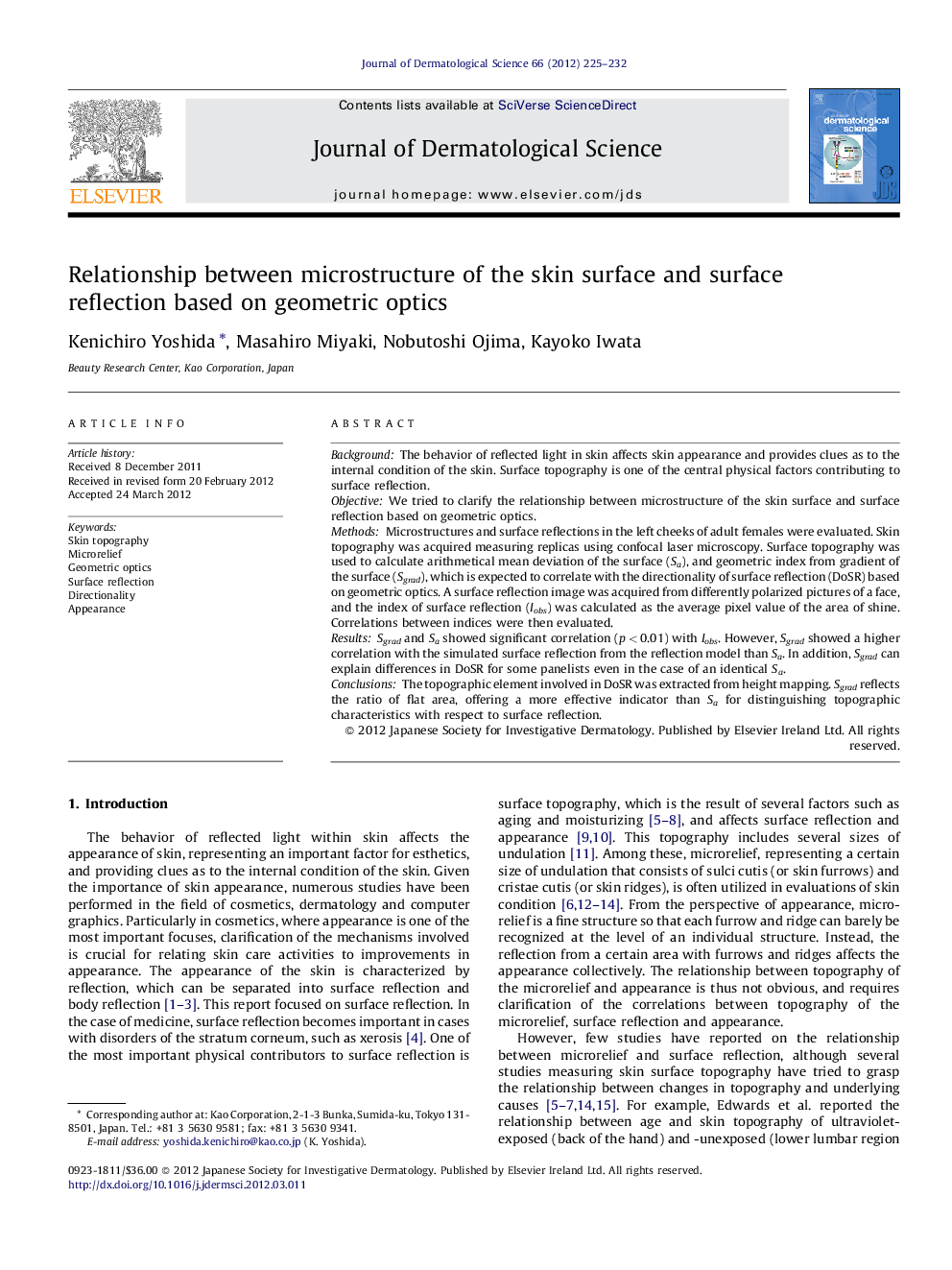| Article ID | Journal | Published Year | Pages | File Type |
|---|---|---|---|---|
| 3213110 | Journal of Dermatological Science | 2012 | 8 Pages |
BackgroundThe behavior of reflected light in skin affects skin appearance and provides clues as to the internal condition of the skin. Surface topography is one of the central physical factors contributing to surface reflection.ObjectiveWe tried to clarify the relationship between microstructure of the skin surface and surface reflection based on geometric optics.MethodsMicrostructures and surface reflections in the left cheeks of adult females were evaluated. Skin topography was acquired measuring replicas using confocal laser microscopy. Surface topography was used to calculate arithmetical mean deviation of the surface (Sa), and geometric index from gradient of the surface (Sgrad), which is expected to correlate with the directionality of surface reflection (DoSR) based on geometric optics. A surface reflection image was acquired from differently polarized pictures of a face, and the index of surface reflection (Iobs) was calculated as the average pixel value of the area of shine. Correlations between indices were then evaluated.ResultsSgrad and Sa showed significant correlation (p < 0.01) with Iobs. However, Sgrad showed a higher correlation with the simulated surface reflection from the reflection model than Sa. In addition, Sgrad can explain differences in DoSR for some panelists even in the case of an identical Sa.ConclusionsThe topographic element involved in DoSR was extracted from height mapping. Sgrad reflects the ratio of flat area, offering a more effective indicator than Sa for distinguishing topographic characteristics with respect to surface reflection.
